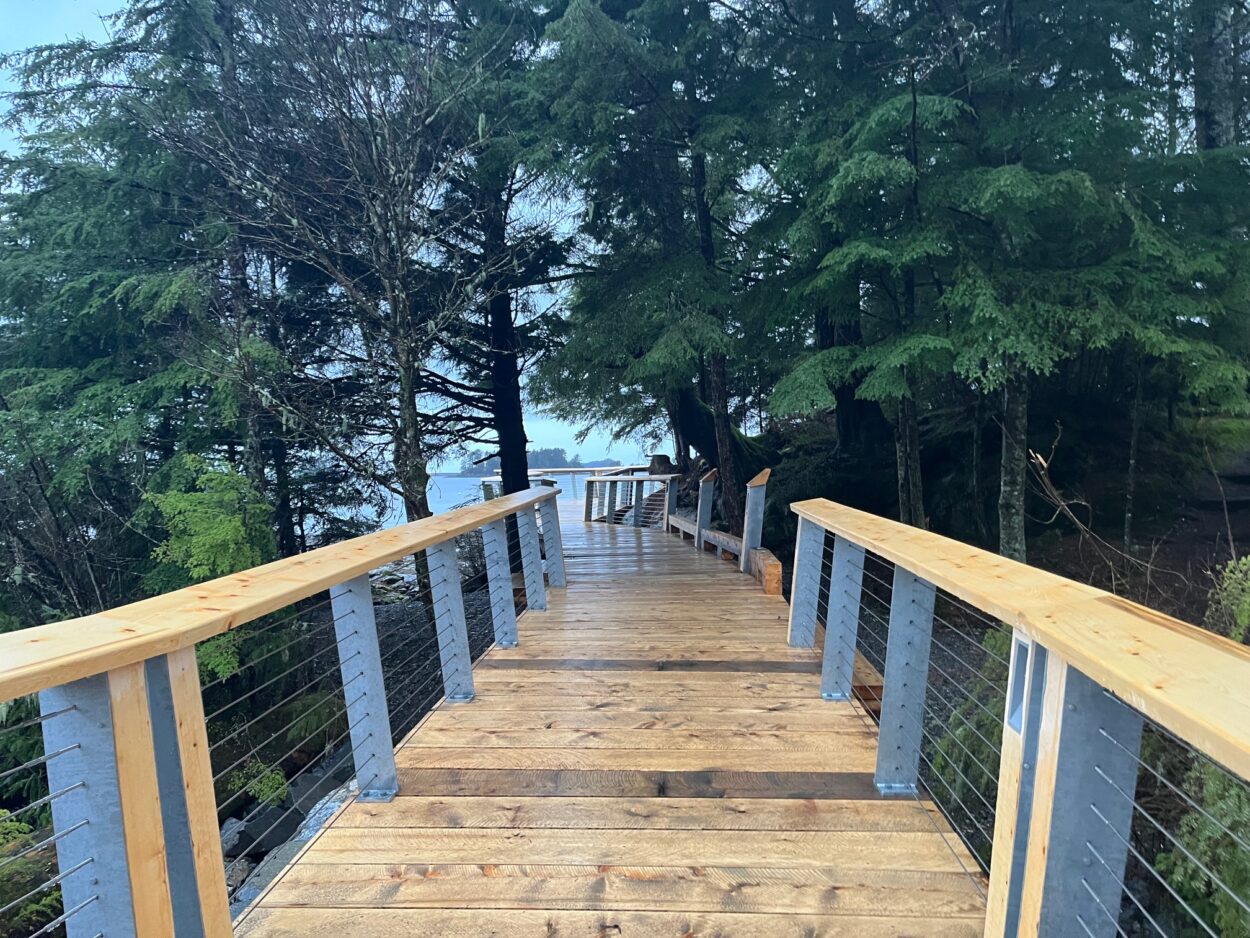
A regional land trust is threatening legal action after they say the National Park Service extended part of Sitka’s sea walk into a protected area. The Southeast Alaska Land Trust says the waterfront walkway could spell trouble for the beach ecosystem below once the summer visitor season begins.
Margaret Custer was surprised when she learned last September that the National Park Service was preparing to build a sea walk between Lincoln Street and the tidelands of Crescent Bay – because, she said, it’s not their land.
“That was a real surprise, and we immediately sought to address the issue,” Custer said.
Custer is the Executive Director of the Southeast Alaska Land Trust. She said the sea walk encroaches onto a city-owned conservation easement stewarded by the land trust since 2010. Under the terms of the easement, any proposed development has to be approved by the land trust to make sure that it aligns with the trust’s conservation goals. Custer said this time, the land trust wasn’t notified or involved in any of the planning.
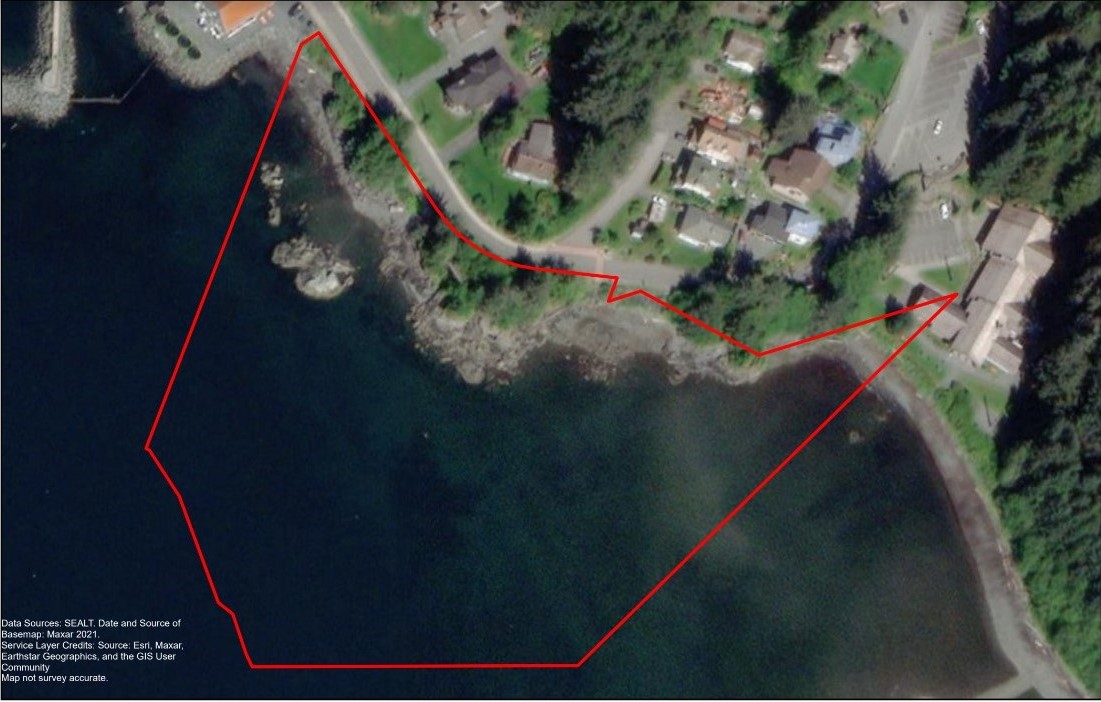
Mary Miller, the superintendent of Sitka National Historical Park, said that the new segment doesn’t fall within the easement.
“We built the sea walk on park land,” Miller said.
The boundary line in the official record is defined by a 2012 survey – that’s the document Custer is referencing. Miller said that in 2015, the Bureau of Land Management redefined that boundary based on improvements to technology and changes to the high tide line.
“We did have the park boundary re-surveyed in 2015,” Miller said. “So that’s a legal survey that defines the park boundary, and that is the marker for park property and whatever is on the other side of the mean high tide line.”
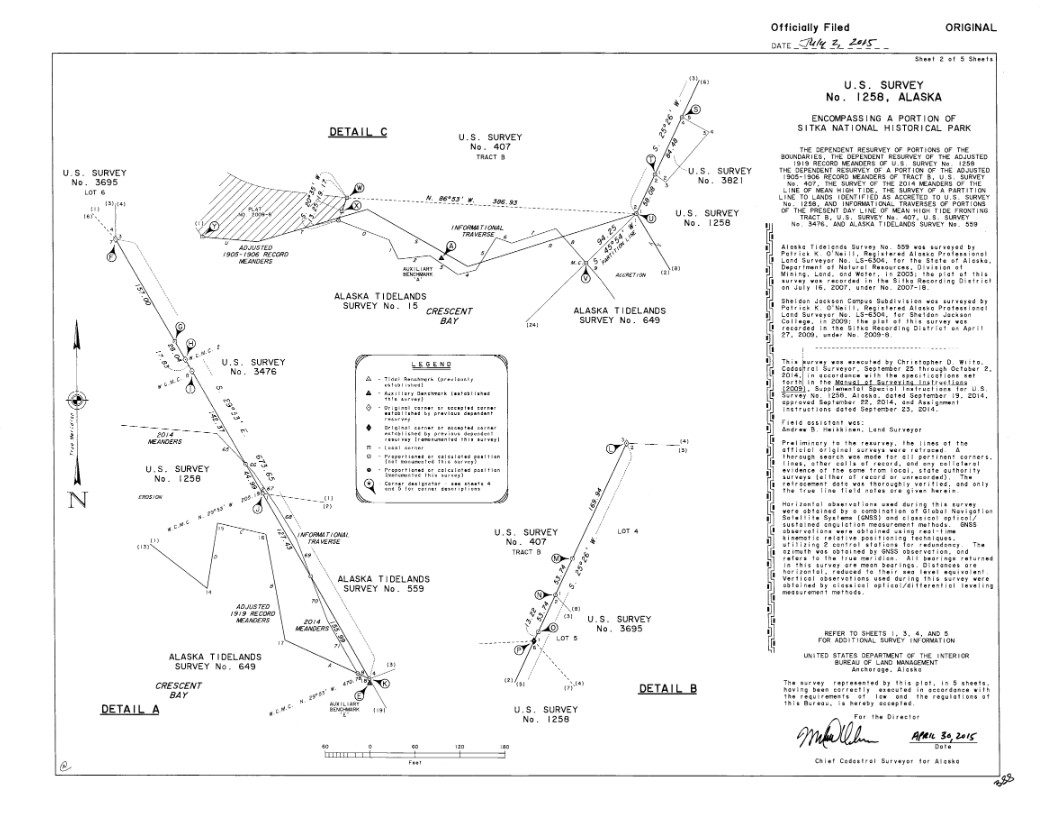
In a November 2023 letter to the National Park Service, an attorney representing the land trust rejected that analysis, writing that “a property owner cannot unilaterally change its property boundary based on an unrecorded survey.” Custer said there’s a legal process to change a boundary line, and that hasn’t happened.
“We’ve told the Park Service on multiple occasions that their 2015 survey, which we just found out about, has not in fact changed the boundary line,” Custer said. “A survey in itself does not adjudicate a boundary line.”
It’s an unlikely conflict between two organizations that both seek to expand access to nature – Miller said she helped secure the conservation easement back in 2010, and Custer said she supports a sea walk that allows people to enjoy the waterfront. But in this case, Custer said the new structure is likely to have unintended impacts.
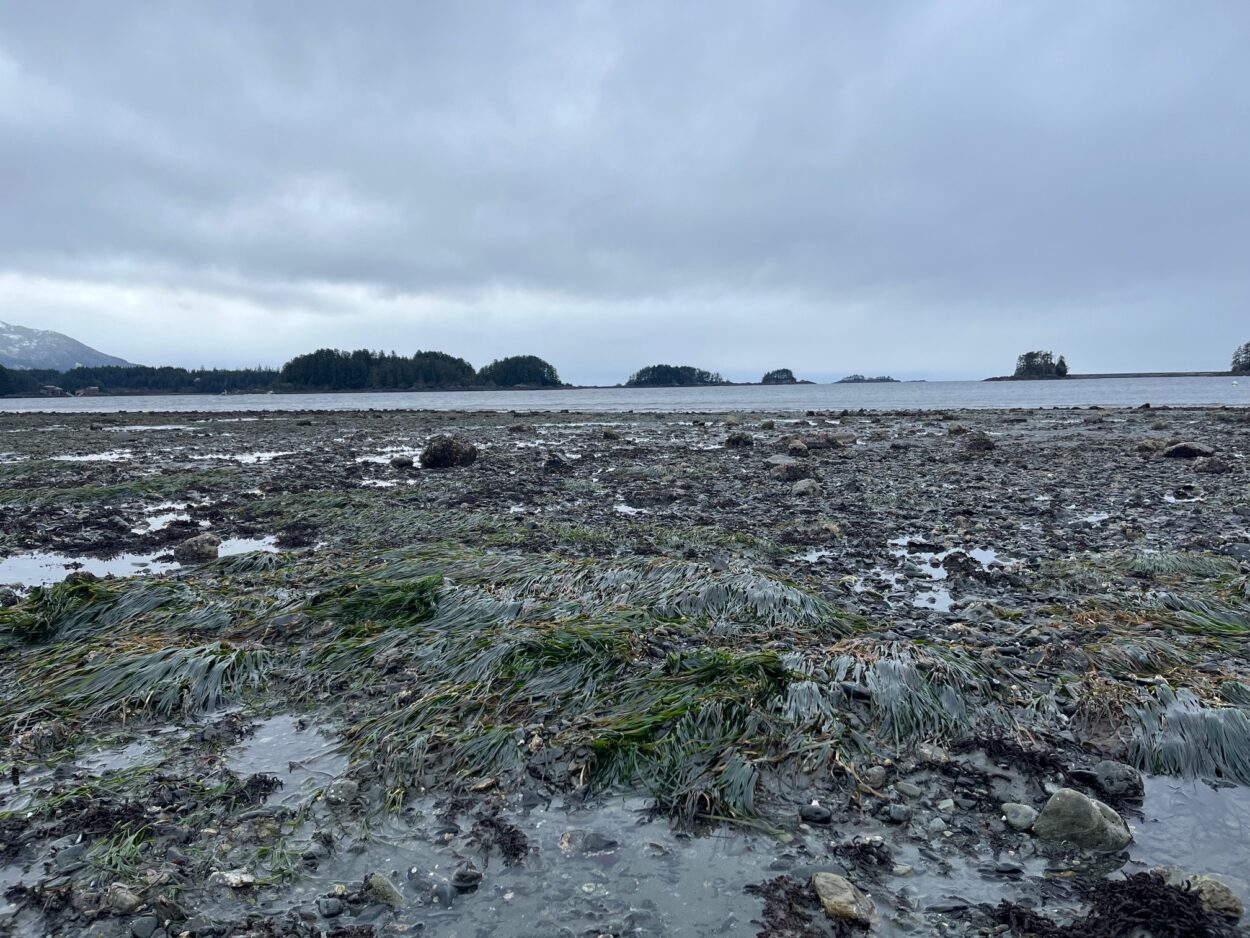
She’s referring to the beds of glistening eelgrass farther down the beach that are exposed at low tides. Eelgrass species are protected under both the Clean Water Act and the Magnuson-Stevens Act, and they’re important both as habitat for wildlife, including herring, and because they sequester carbon. Custer said the structure of the sea walk, which includes stairways to direct pedestrians onto the beach, puts those eelgrass beds at risk.
“The land trust is concerned that an increased amount of tourist foot traffic from the sea walk onto the intertidal area, particularly during tourist season, poses a threat to eelgrass beds and the wildlife that are reliant on those eelgrass beds,” Custer said.
Custer said the land trust has already found patches of trampled eelgrass during the summer season, usually after large groups of cruise ship passengers visit the beach. With Sitka’s summer tourist traffic reaching record levels over the last two years, Custer said she understands the need for sea walk improvements, but the stairs need to go.
Miller said that the Park Service is open to meeting with the land trust to resolve Custer’s concerns.
“The ideal outcome is that we get past this, you know, misunderstanding or whatever, and continue to support the activities of SEAL Trust in preserving the values that the easement was set up for,” Miller said.
Custer said, though, that Miller and the National Park Service have not responded to any correspondence from the land trust or its lawyers since last November. She said that the trust’s standards and practices will require them to take legal action if they can’t resolve the problem otherwise.
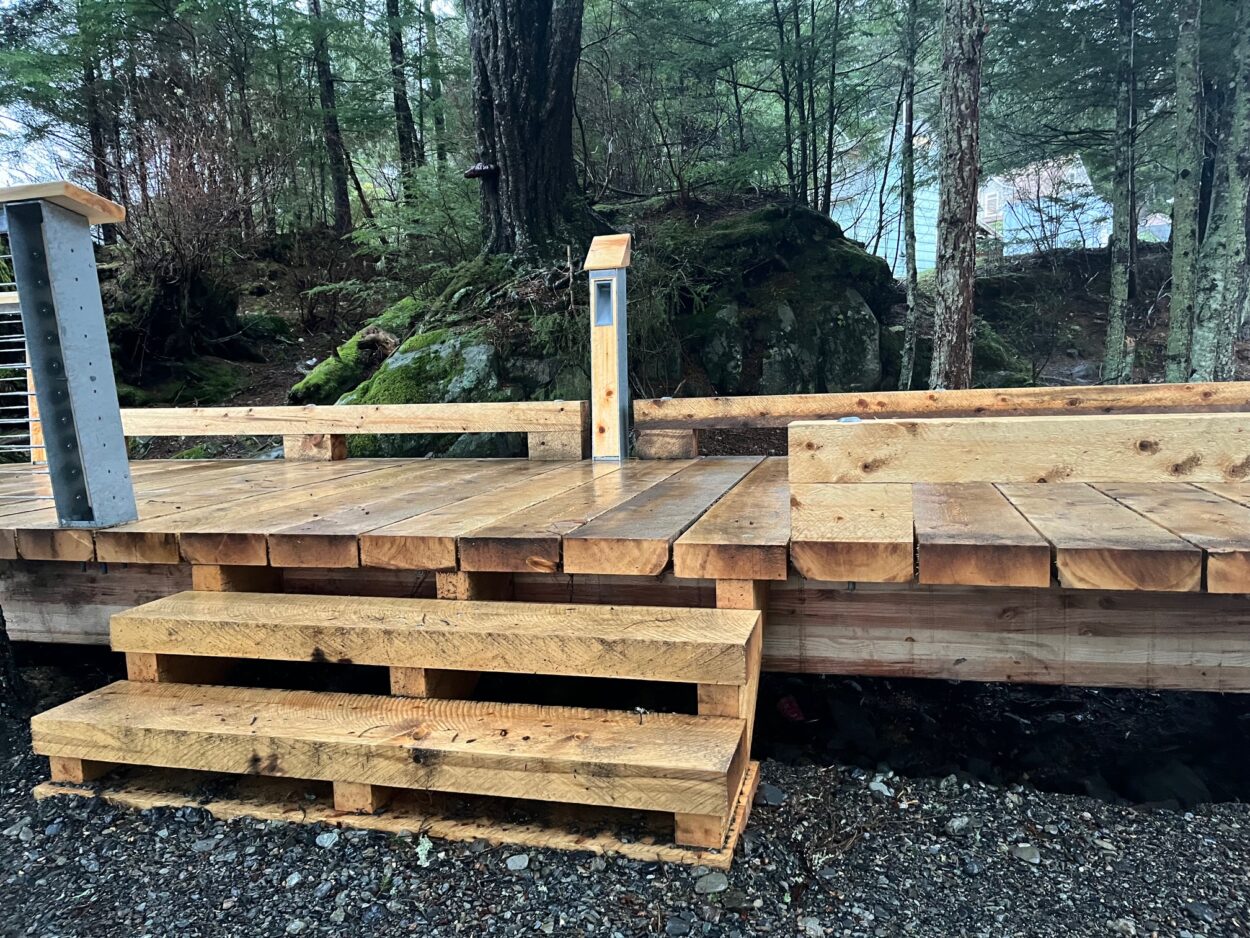
“Right now, we’re like, a month and change out from the start of the visitor season,” Custer said. “We need to make sure that modifications happen before that.”
The City and Borough of Sitka declined to comment on the question of the land boundary, citing the possibility of imminent legal action. In the meantime, the new sea walk is open to pedestrians.






























